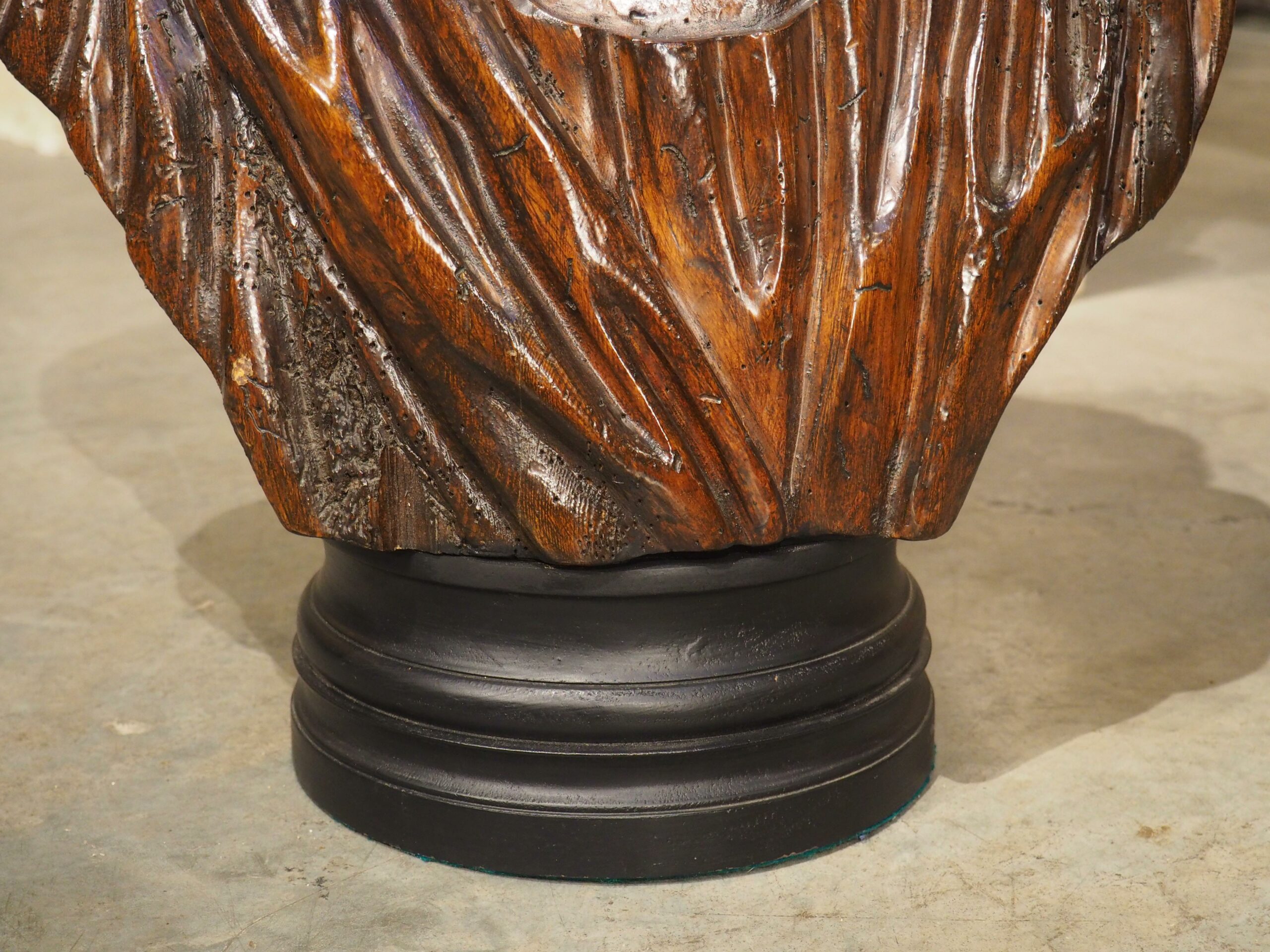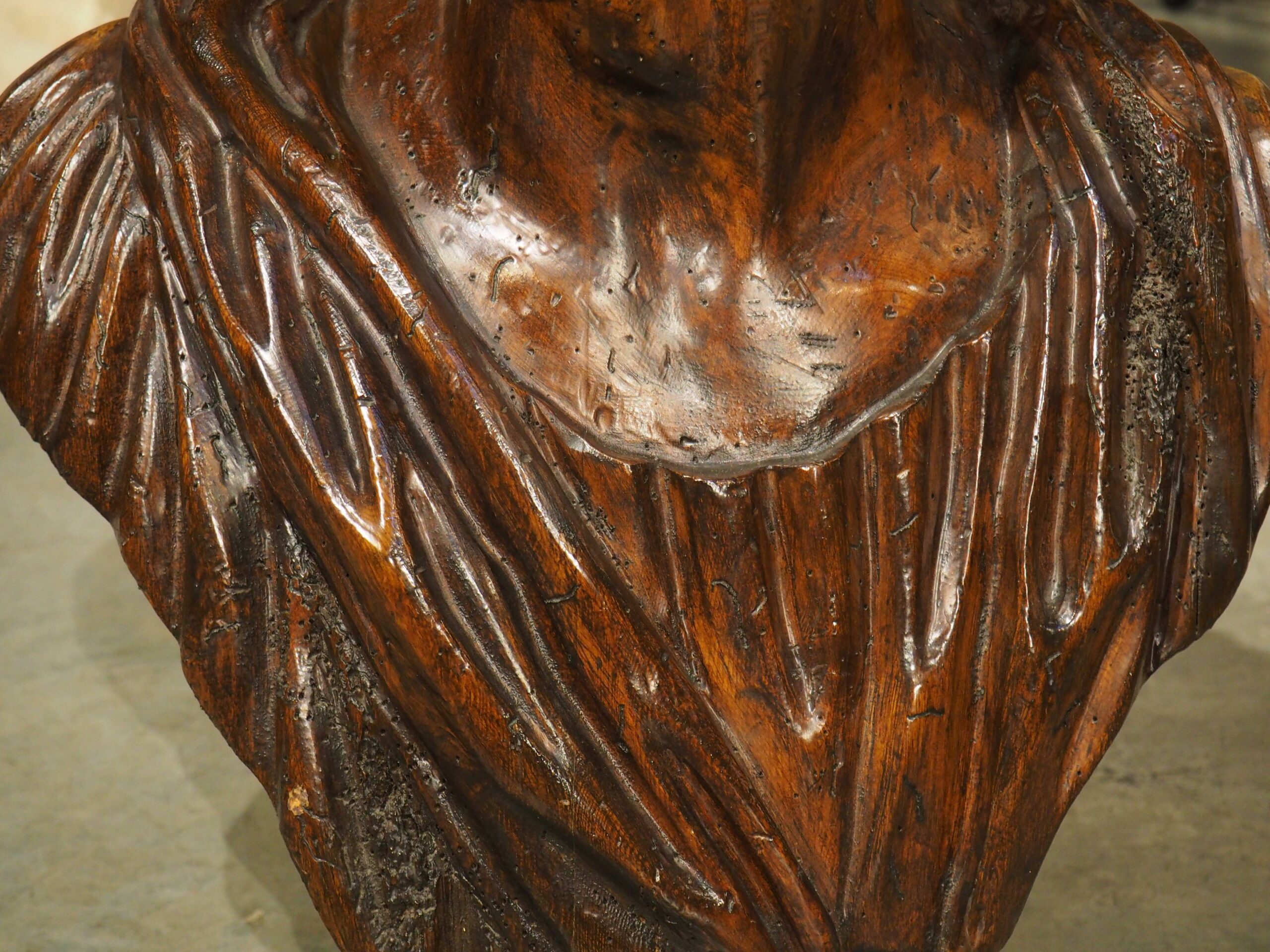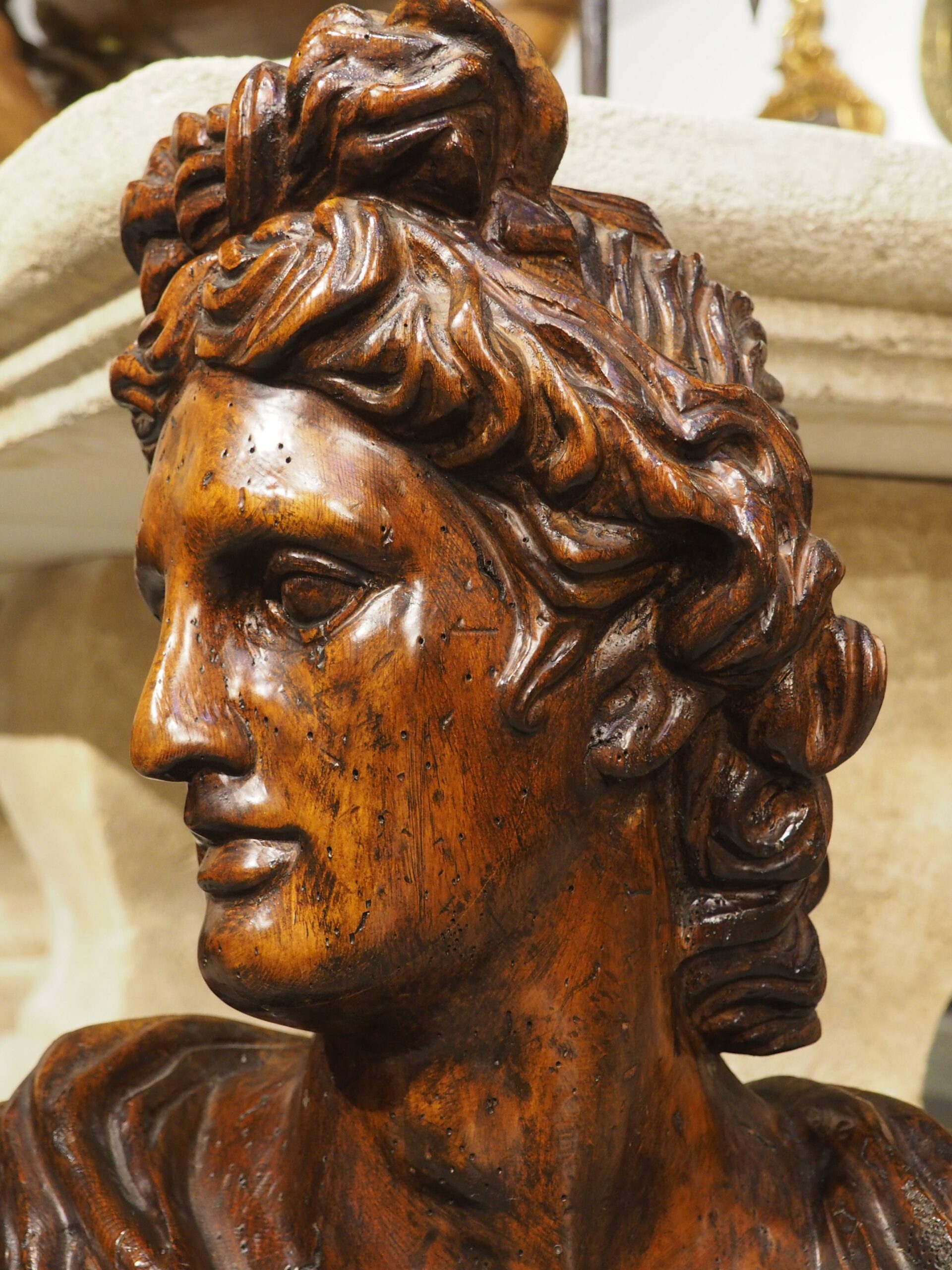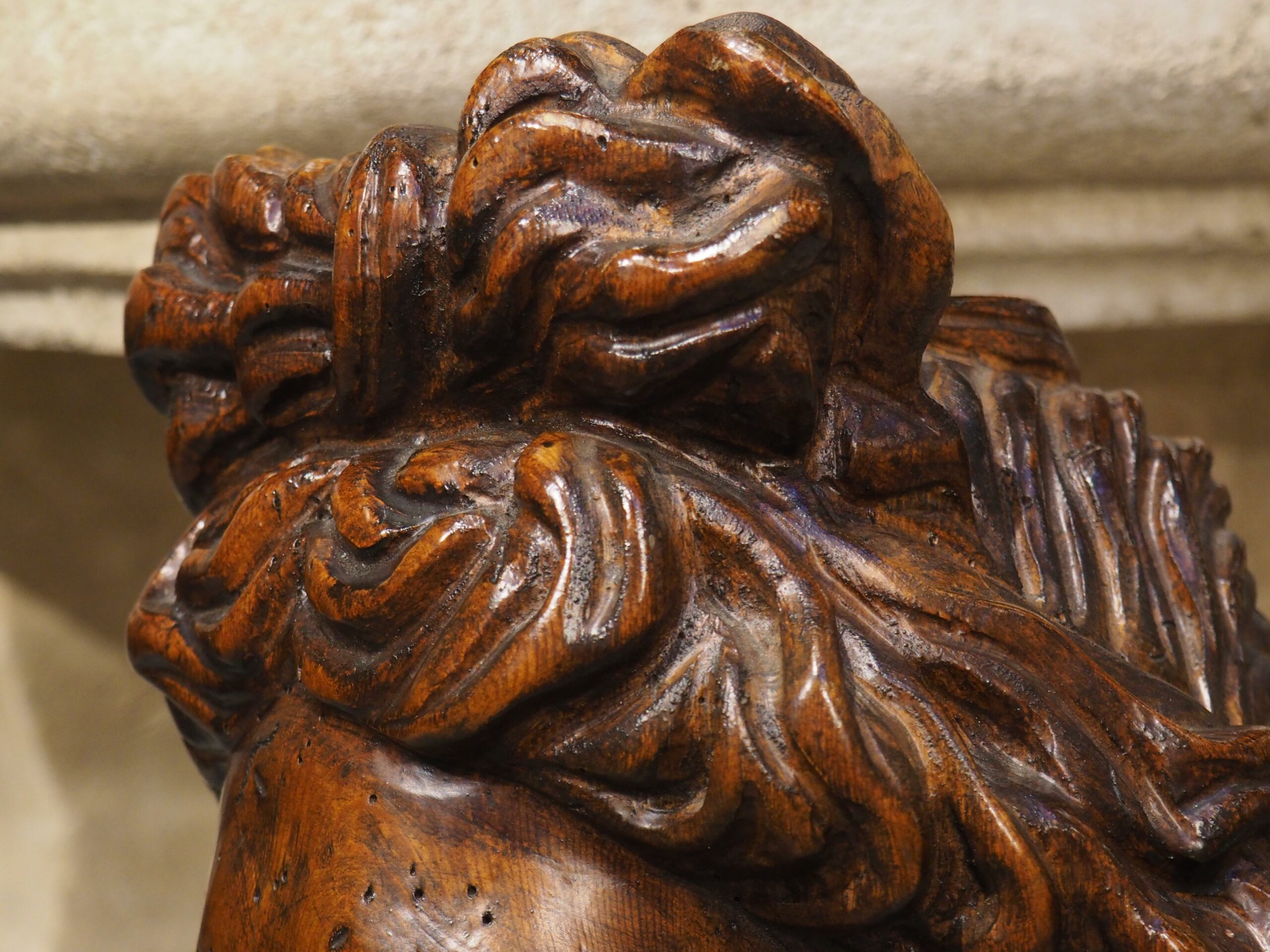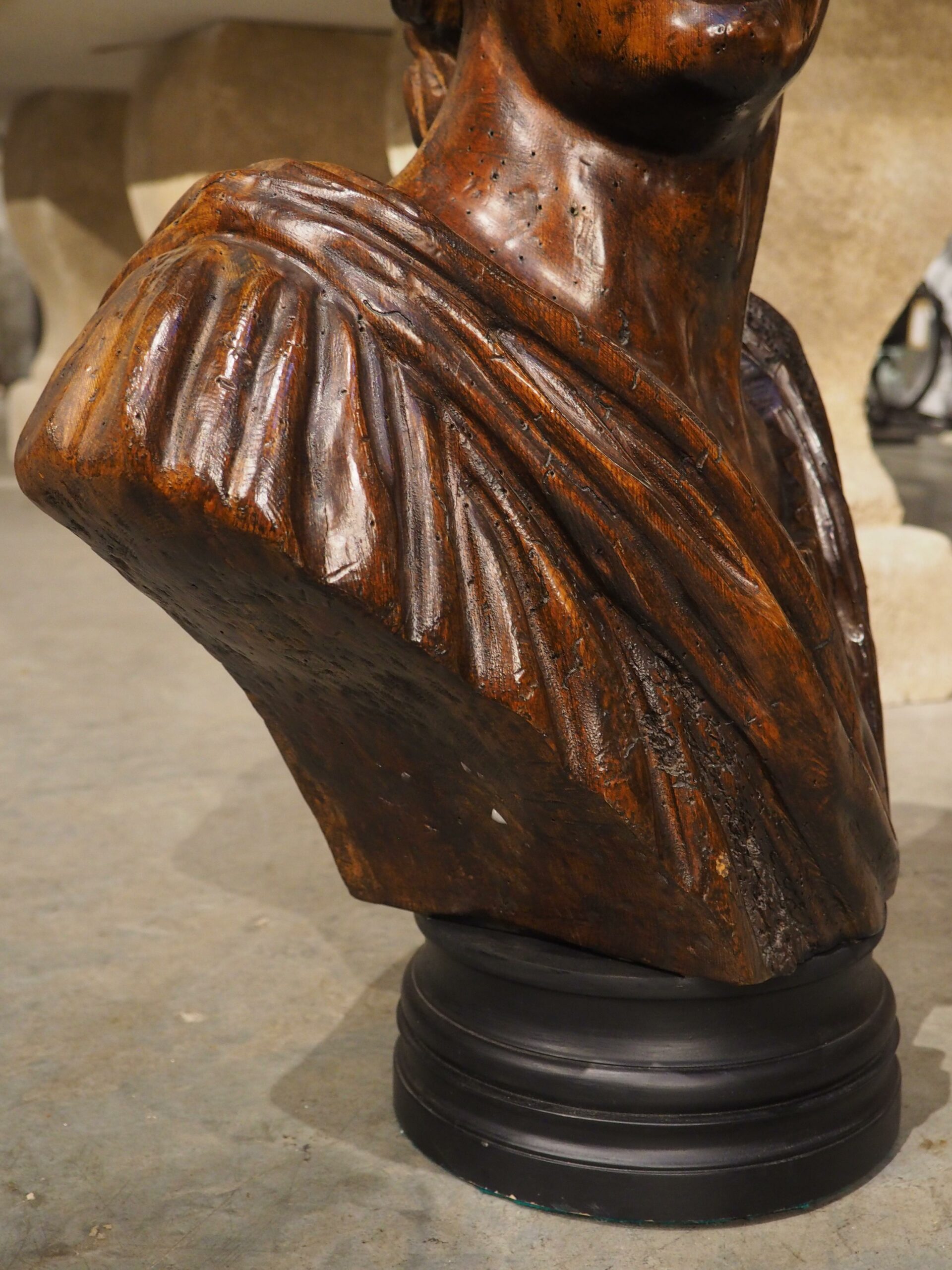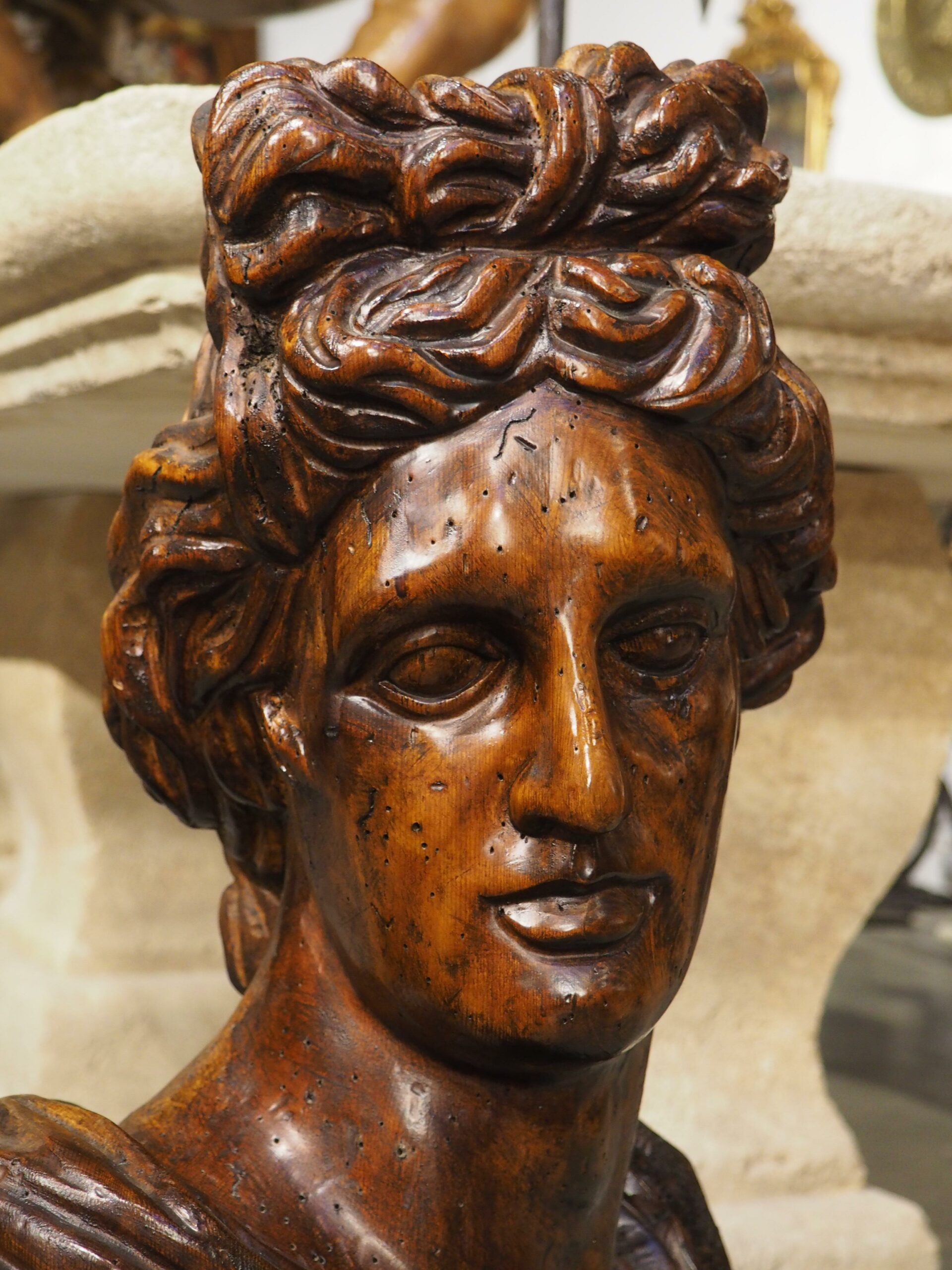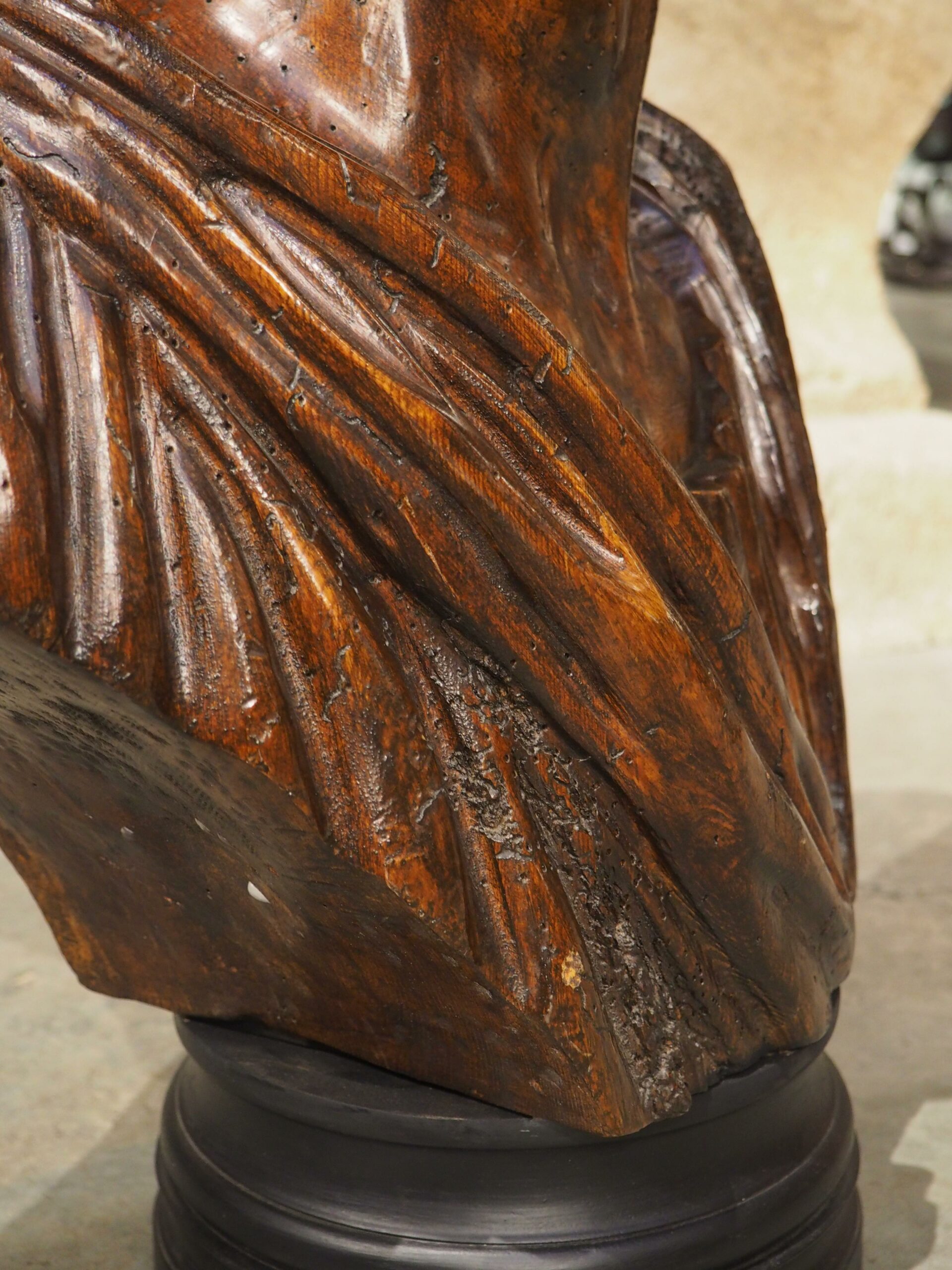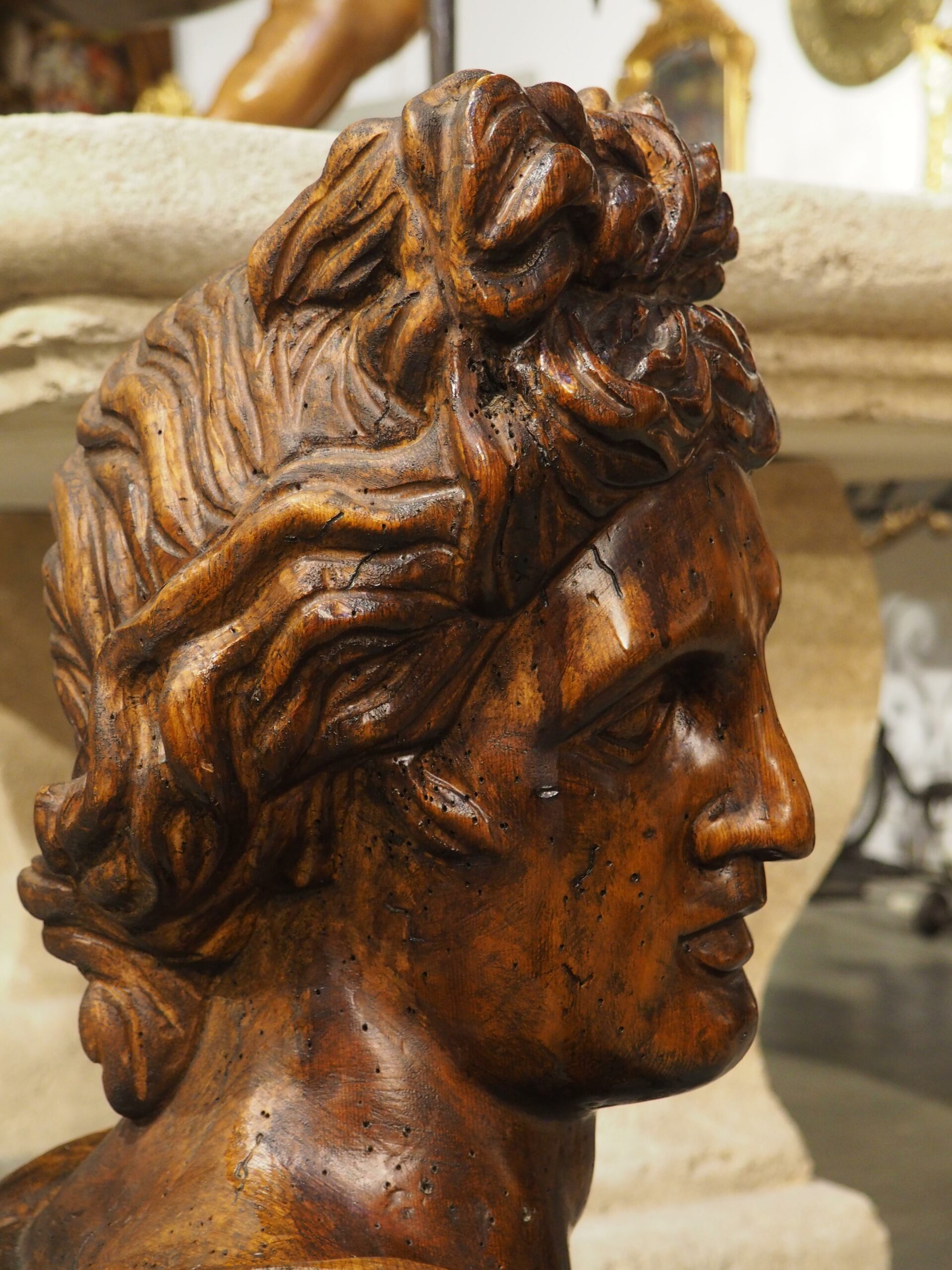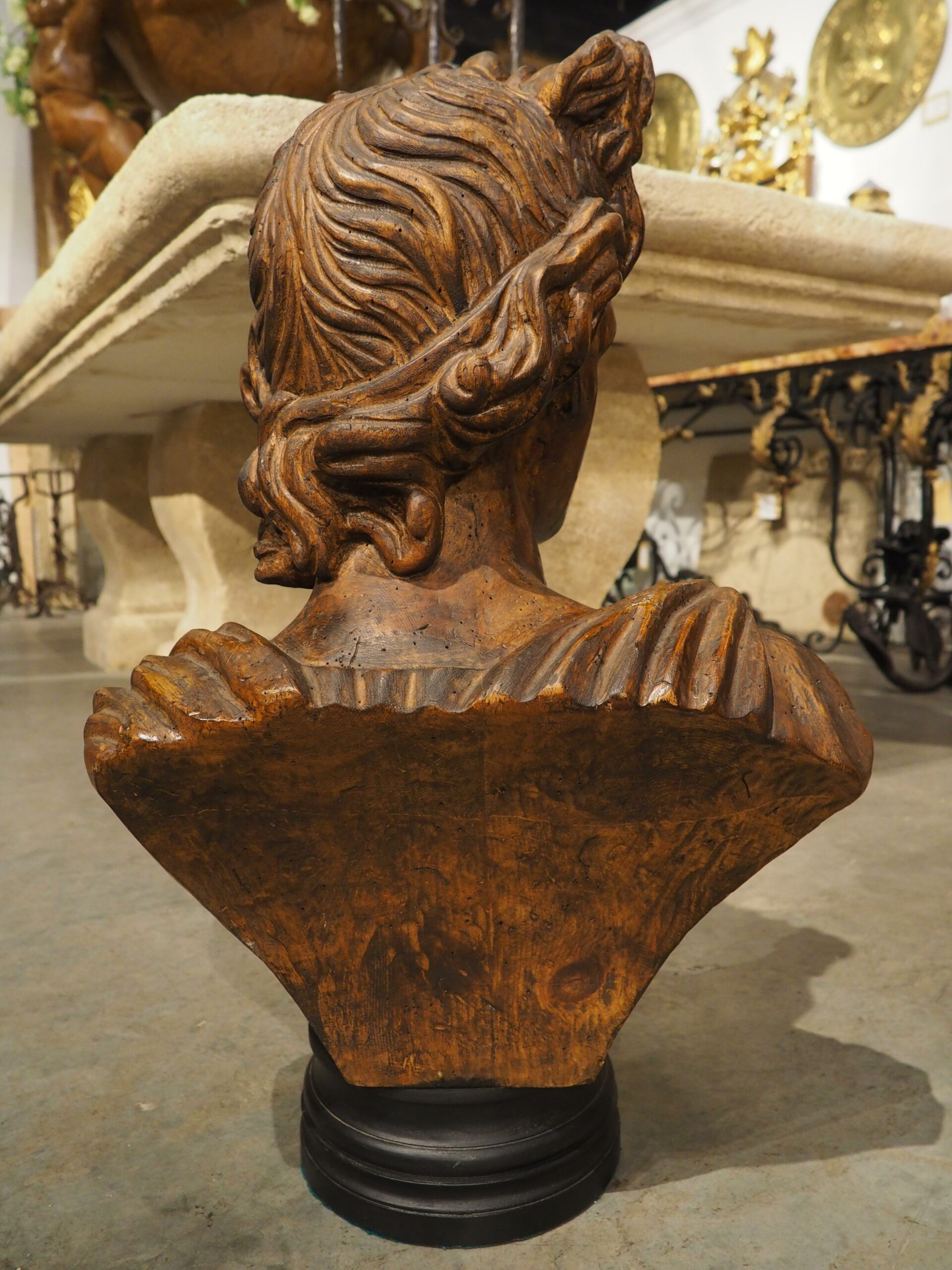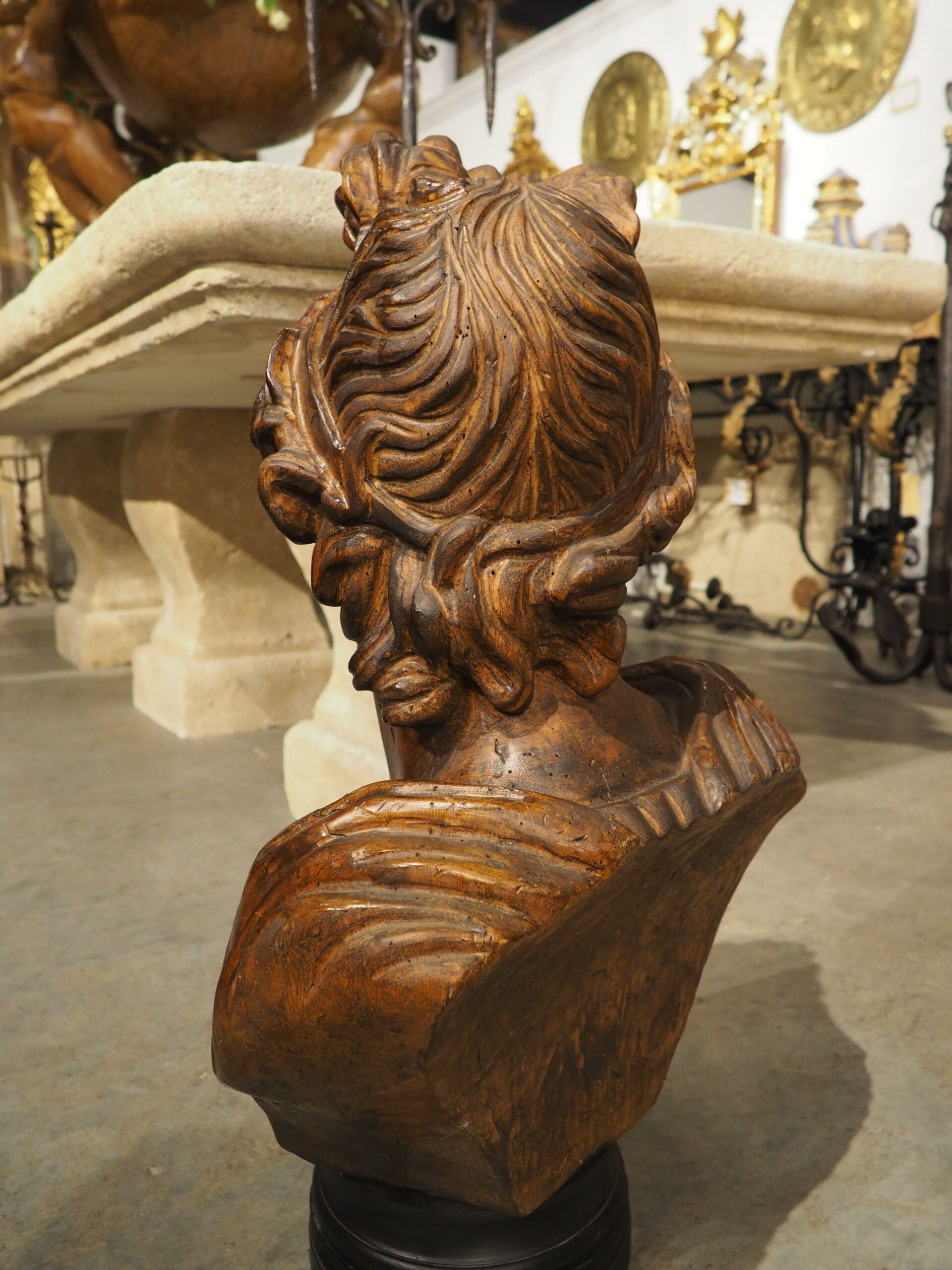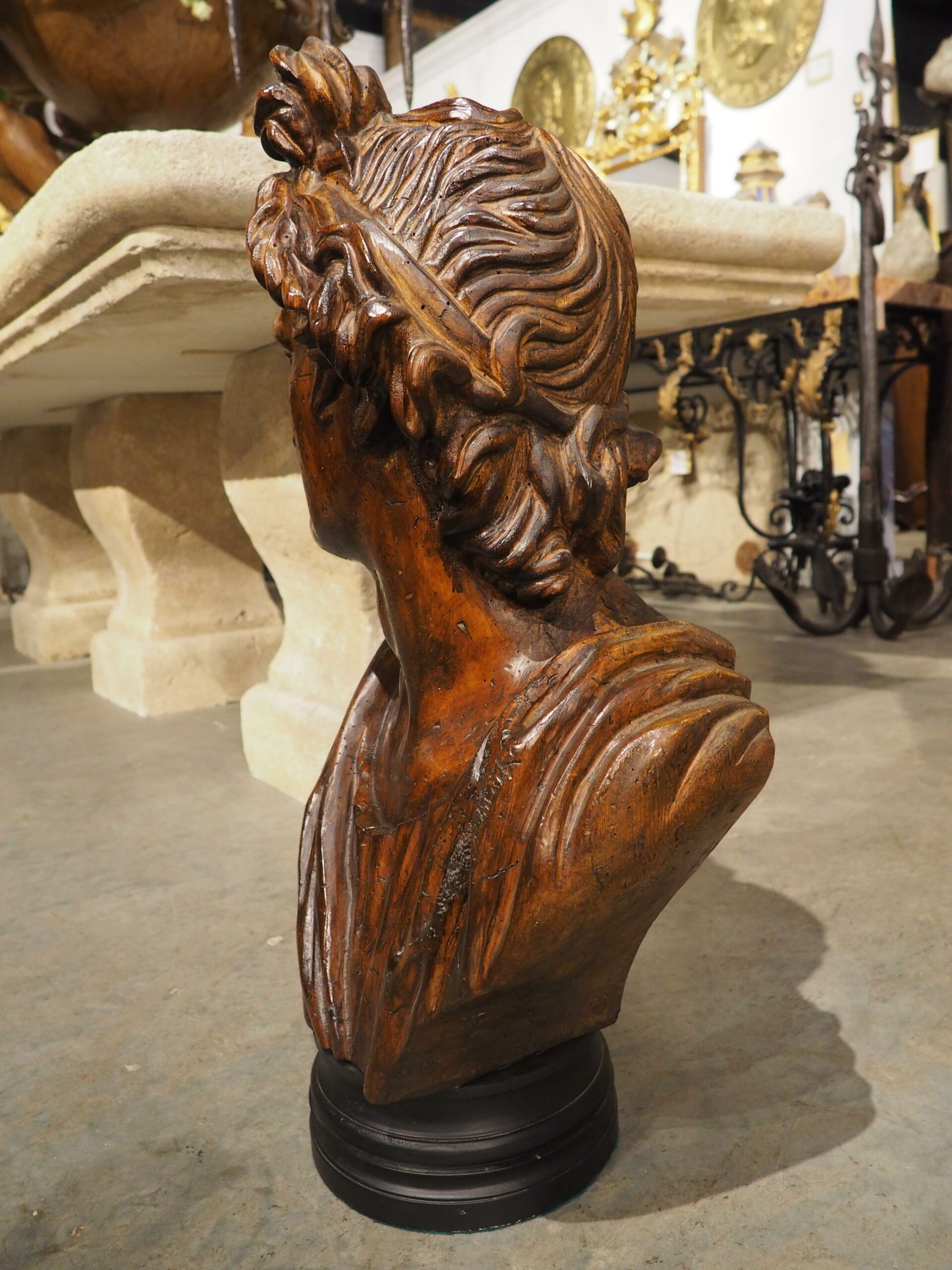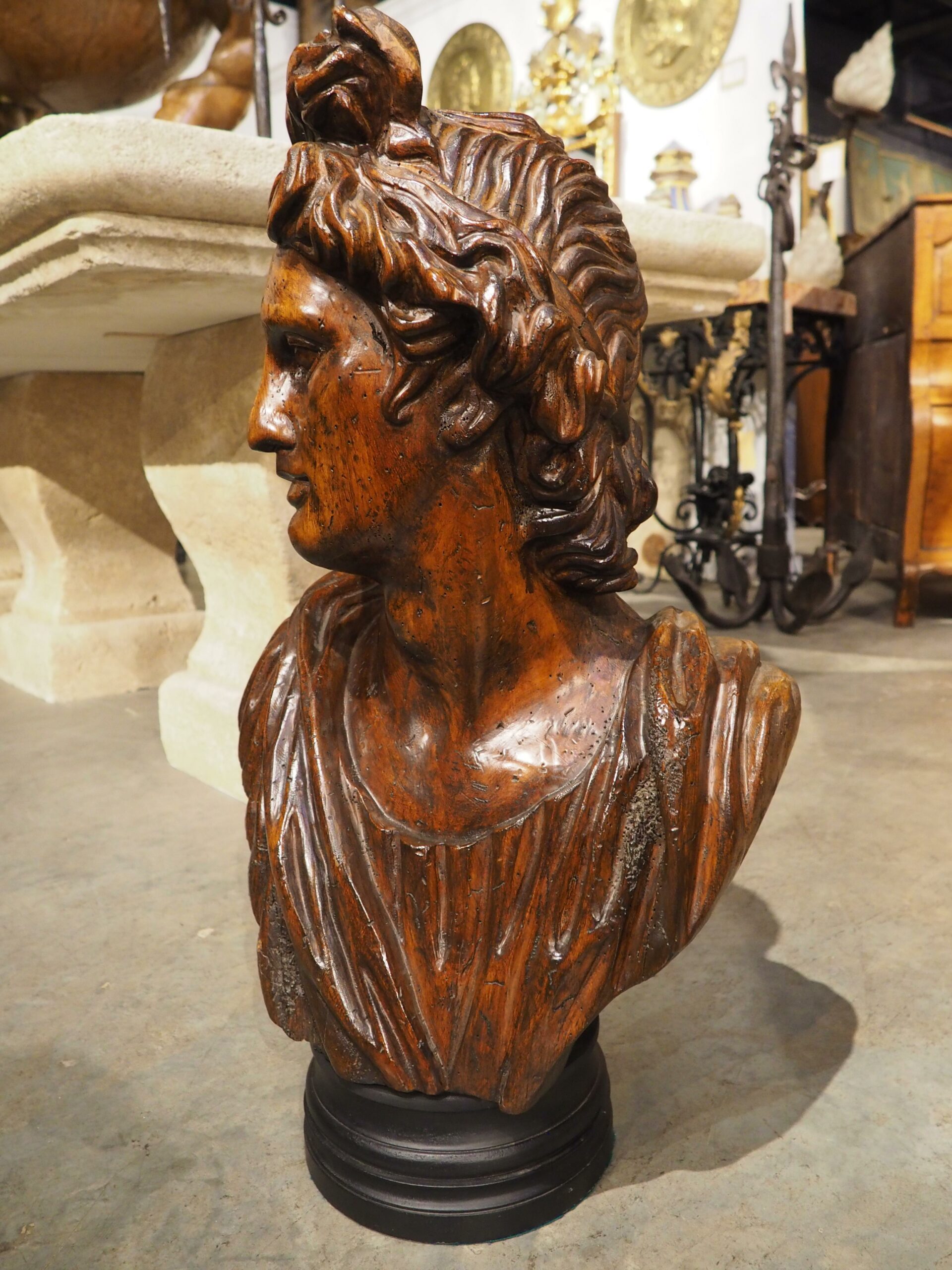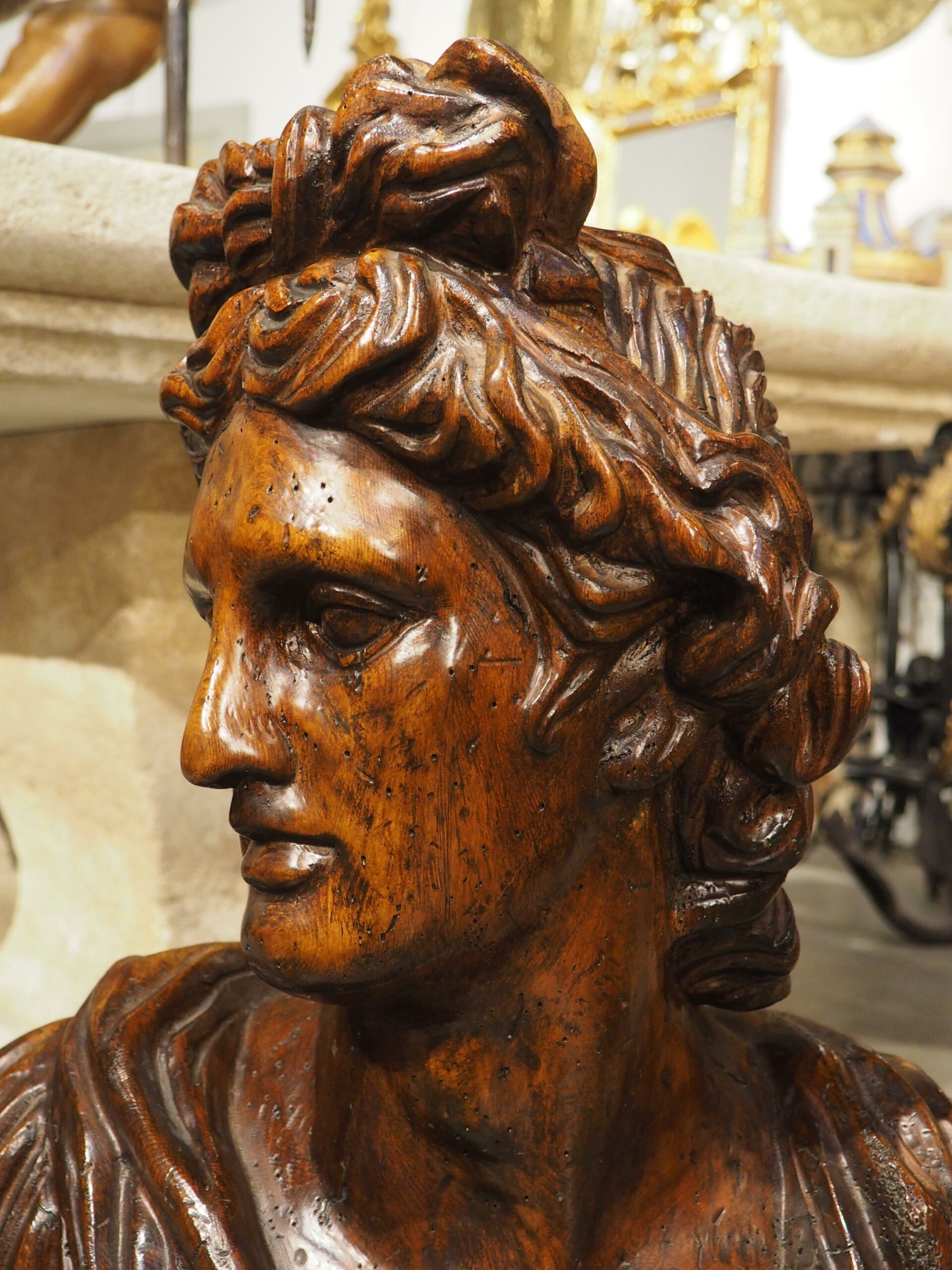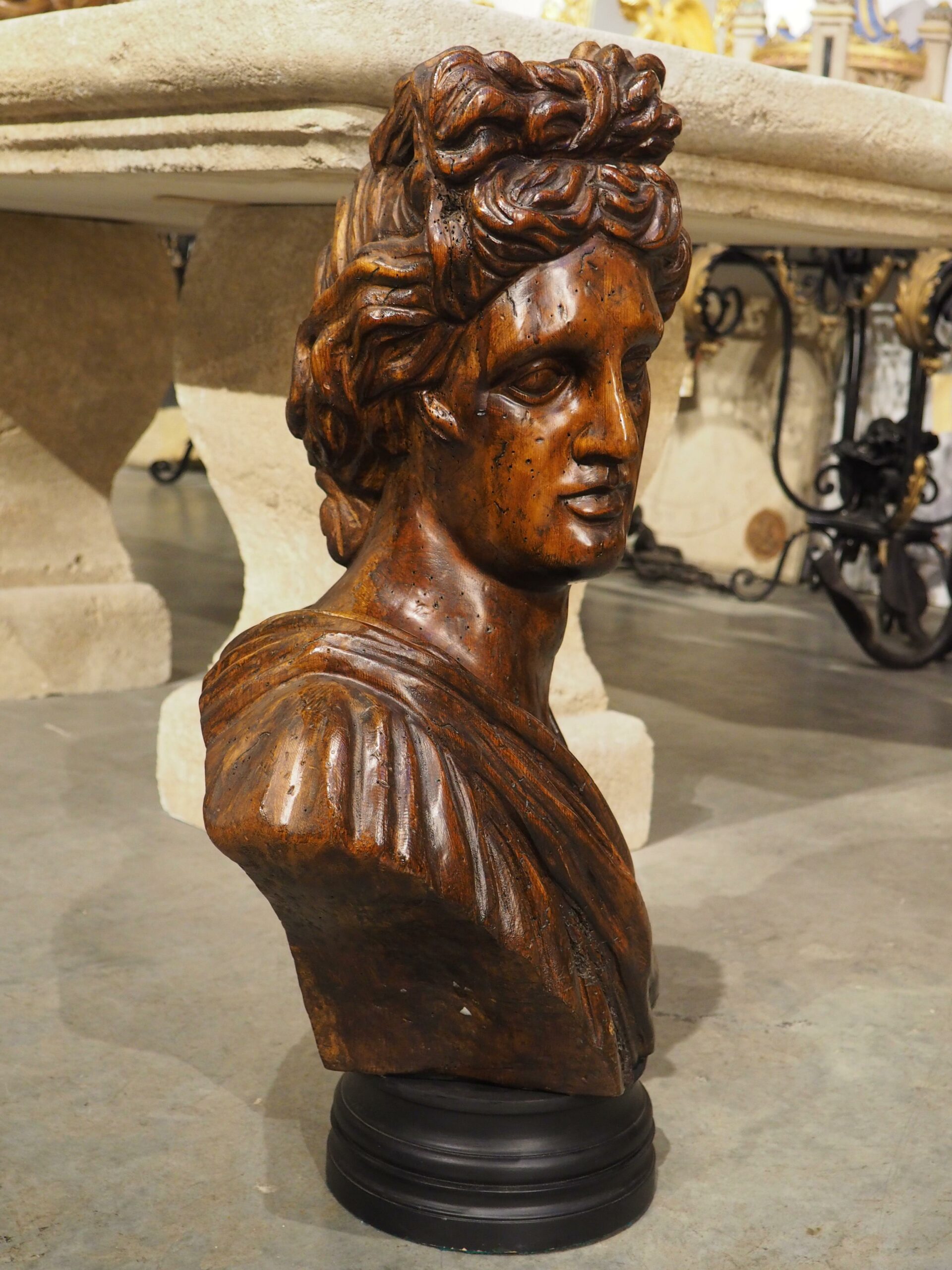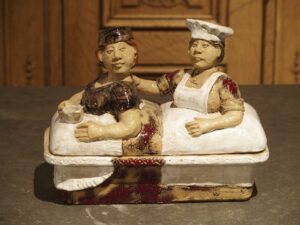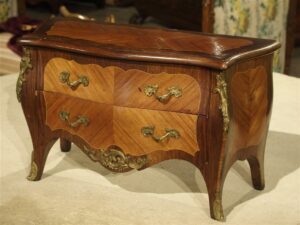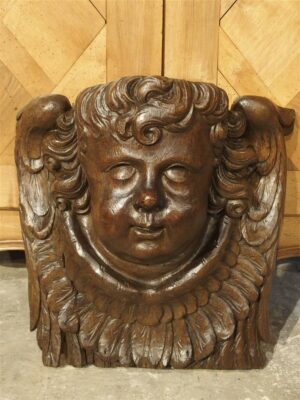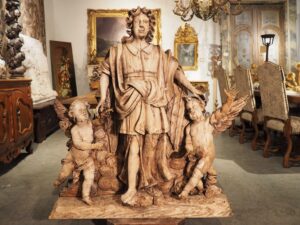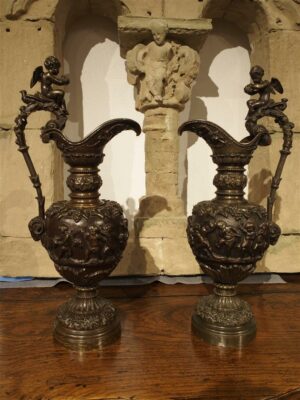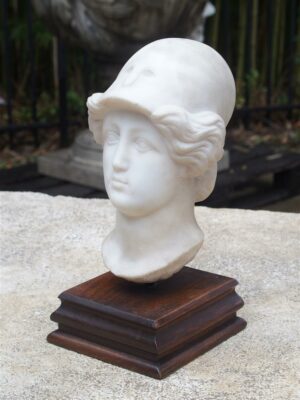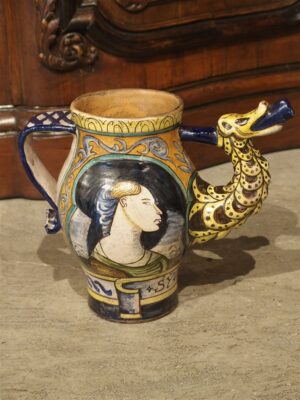After the famous Apollo Belvedere marble statue (dating to Rome, mid-2nd century), this wooden bust of the Roman/Greek god was hand-carved in Italy during the 1800s. The marble is itself considered to be a copy of an original bronze by Leochares, a Greek sculptor active during the 4th century BC. For centuries, the whereabouts of the marble version were unknown, until it resurfaced in Italy in the late 15th century. It is now on display at the Vatican Museum, specifically the Octagonal Court of the Museo Pio-Clementino.
Both of the antique versions are full-body statues noted for their use of contrapposto, which is a technique that gives the subject(s) a natural body rotation. This complex motion gives Apollo’s face a slight profile, while his torso remains frontal, and the woodworker who carved our version was able to maintain this perspective. Clad in a furled chlamys, which is a type of cloak that was worn in antiquity. Apollo is positioned on top of a painted black circular plinth (added more recently) with multiple rings of molding. The front side of the bust has been varnished, giving the statue a rich patina. A wonderful representation of a renowned statue from antiquity, our wood Apollo bust can be placed on a mantel, wall shelf, or center table to add a touch of Neoclassical sophistication.
CONDITION: Very good antique condition with minor rubs and losses. Traces of old woodworm damage. The painted black base has been added more recently. There is a line of demarcation, as the front side is varnished (more recently), but the back has been left to its original finish.



